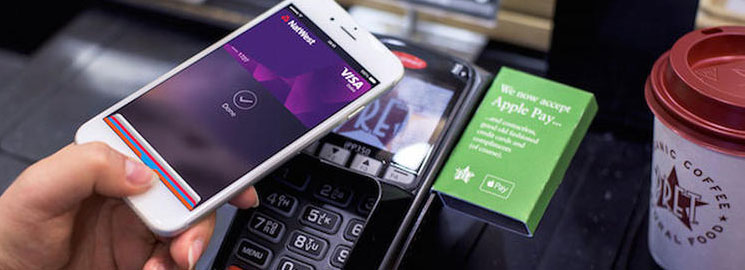Just as credit cards are to blame for causing consumers to spend between 12 -18 percent more than if the they had used cash, experts are now saying that mobile payments could similarly lead shoppers to spend more at the register.
Studies have shown that credit cards have a tendency to make people spend more money. It looks like people spend 12-18% more when using a credit card as opposed to cash. Another study conducted by MIT discovered that people were willing to pay between 60 and 115% more for the exact same item when paying with a credit card as opposed to cash. MIT researchers called this phenomenon “the credit card premium”.
Mobile payments are still in their infancy and their impact on consumer spending habits are still relatively unclear. But there is common belief amongst experts that mobile payments will have a similar effect on peoples spending as credit cards. Initial studies have started to support this. According to one study of 30,000 U.S. ,European and Canadian consumers, those who use mobile payments spend nearly twice as much through all digital channels than those not buying on mobile devices.
It’s been suggested that we reach for our wallets and purses far less often than we reach for our phones, with some data showing smartphone users reach for their devices over 100 times per day.
Mobile payments are great at achieving two things. Disguising cash payments as something different and making the payment process even faster. They are extremely nontransparent in nature and have little resemblance to the cash payment process. This makes the aversion to spending extremely low as the immediate pain normally felt when spending cash is pushed into the future and out of your mind. Mobile devices remove the traditional barriers experienced when using cash, making the payment process faster, easier and subsequently more mindless.
Small things like getting your wallet out, counting the money and handing it over are no longer part of the process. All these little actions provide a consumer with two things – they take time, giving your brain more opportunity to reconsider your purchase and they trigger certain levels of pain as you physically depart with your hard earned cash. These are powerful psychological moments that are a central part of the cash payment process. In contrast, mobile payments only require a push a button or swipe of your phone. With no cash and a faster transaction process, the pain we endure is dramatically reduced.
To help curb your mobile spending you really want to have a budget. Once you’ve figured out your monthly expenses you can get a better sense of how your are spending your money and where you want to make changes. Most mobile wallet apps allow you to see your transaction history quite easily, which means – if you are diligent – you can gain a good sense of how much is being drained from your digital wallet.
Another saving grace: Apple Pay (which is now available here in Canada) and other contactless payments (tap-to-pay debit and credit cards) are usually limited to transactions under $100. Although this is done for security and fraud prevention reasons, it also prevents you from mindlessly tapping away on big purchases. Also too, if you have a PIN setup on your device you may be more inclined to think twice about your purchase if you have to take the time to punch in a PIN code.
I’d also suggest downloading a budgeting app or using free online budgeting resources to help keep track of your spending habits. Take for example MyMoneyCoach.ca, a free Canadian service that allows users to plot out their budget using an interactive Excel spreadsheet. (and you don’t have to be a spreadsheet expert to use it.)
There are also more sophisticated services like Mint.com – a free web-based service that allows users to plug in all of their financial information, from bank accounts and credit cards, to loans and debts, and track transactions in real time. Users can create budgets, set savings goals and receive email alerts on their Android or iOS devices when they are nearing their spending limits.
In conclusion, it seems like mobile payments make the payment process faster and easier than ever before. But this convenience and speed comes with a high cost that often goes unnoticed. As we move rapidly towards a mobile world with seamless transactions, we should remember that a little pain in the payment process may be a good thing.


Leave a Reply